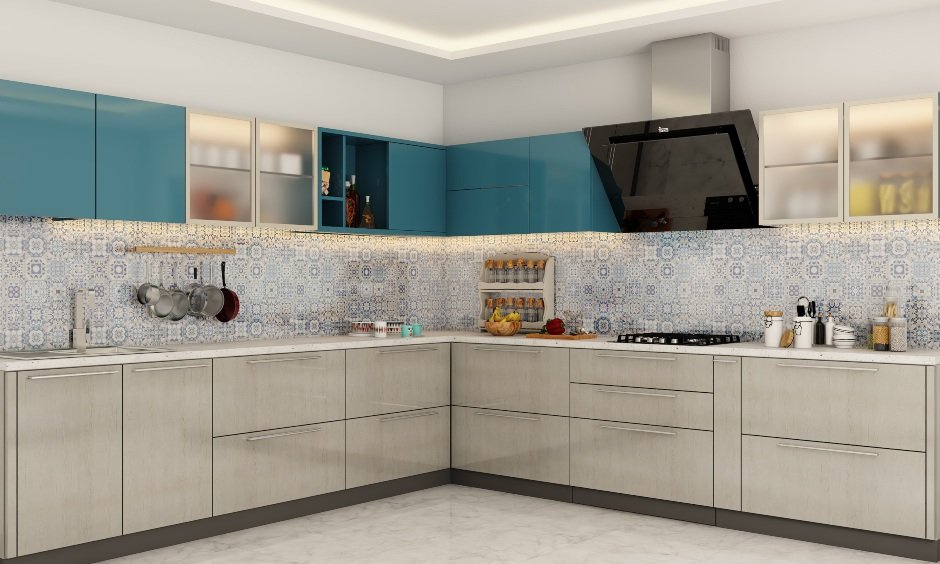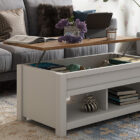Cooking convenience meets design brilliance in your dream kitchen – explore the magic of the kitchen work triangle!
The kitchen is often considered the heart of the home, where culinary magic happens and cherished family moments are created. Whether you’re a professional chef or a home cook, an efficient kitchen design can make a world of difference in your daily cooking experience. One of the fundamental principles of kitchen design that has stood the test of time is the concept of the “kitchen work triangle.” In this blog, we will delve into the kitchen work triangle, explore its significance, and discuss various kitchen layouts that optimize this vital design element. Let’s discover how you can transform your kitchen into a space that’s not only aesthetically pleasing but also incredibly functional.
The Kitchen Work Triangle: Unraveling the Basics
The kitchen work triangle is a design principle that focuses on creating an efficient flow between the three primary work areas in the kitchen: the stove, the sink, and the refrigerator. This layout minimizes the distance and effort required to move between these essential elements, making your cooking tasks smoother and more enjoyable. By understanding the principles of this triangle, you’ll be able to optimize your kitchen’s layout to suit your needs and cooking style. Additionally, consider the ideal measurements for the sides of the triangle to ensure that it’s neither too cramped nor too spread out for maximum efficiency.

Kitchen Triangle Rule: Striking the Perfect Balance
The kitchen triangle rule isn’t just about the physical placement of appliances and workspaces; it’s also about finding the right balance between form and function. While efficiency is crucial, your kitchen should also reflect your personal style and preferences. Explore how to strike the perfect balance by choosing materials, colors, and design elements that not only enhance the functionality of your kitchen but also create a visually appealing space. This section will provide tips and examples of how to make your kitchen both efficient and aesthetically pleasing.

Best Modular Kitchen Designs
Compact Work Triangle Layouts: Making the Most of Your Space
In smaller kitchens or open-concept living areas, space is often at a premium. Discover compact work triangle layouts that make the most of limited space without sacrificing functionality. This may involve creative placement of appliances, utilizing smart storage solutions, and ensuring that the triangle remains unobstructed. We’ll delve into specific design strategies that can help you maximize your kitchen’s efficiency while still maintaining a sense of spaciousness.

The L-Shaped Kitchen Triangle: A Functional Twist
The L-shaped kitchen layout is a versatile option that can optimize the work triangle by creating a natural flow between the stove, sink, and refrigerator. Learn how to take advantage of this design by exploring various configurations and cabinet arrangements. This section will also address potential challenges and how to overcome them when working with an L-shaped kitchen to ensure a functional and aesthetically pleasing result.

Island Kitchen Triangle: Expanding Your Culinary Horizon
For those fortunate enough to have a kitchen island, it can serve as a valuable addition to the work triangle. Discover how to integrate the island seamlessly into your kitchen’s workflow. We’ll discuss the benefits of having a multifunctional island, including extra counter space, storage, and seating options. Additionally, we’ll provide design ideas and considerations to ensure that your island enhances, rather than hinders, your kitchen’s efficiency.

In the world of kitchen design, the kitchen work triangle remains a timeless and essential concept. It’s the key to creating a harmonious space that not only looks great but also functions seamlessly. Whether you have a small kitchen that requires a compact work triangle or a spacious one where an island can be your culinary hub, understanding the principles of efficient kitchen design is the first step towards transforming your kitchen into the heart of your home.
By striking the right balance and choosing the ideal layout, you can elevate your cooking experience and make your kitchen a place where delicious meals and cherished memories are crafted. So, start planning your ideal kitchen layout today and embrace the magic of the kitchen work triangle.
FAQs On Kitchen Work Triangle
1. What are some common mistakes to avoid when designing the kitchen triangle?
When designing the kitchen triangle, it’s crucial to avoid common mistakes that can hinder its efficiency. Some of these mistakes include:
Overcrowding: Placing too many appliances or obstacles within the triangle can lead to congestion and reduced functionality. Ensure there’s ample space for movement.
Ignoring Ergonomics: Neglecting the ergonomics of your kitchen can result in discomfort and inefficiency. Consider counter heights, appliance placement, and ease of access.
Disregarding Workflow: Failing to consider the natural flow of tasks in your kitchen can disrupt the work triangle. Make sure the workflow aligns with the triangle’s placement.
2. Does the size of the kitchen affect the effectiveness of the kitchen triangle?
Yes, the size of the kitchen can significantly impact the effectiveness of the kitchen triangle. In smaller kitchens, maintaining an efficient triangle is often easier due to the proximity of the key elements. However, in larger kitchens, it’s essential to carefully plan the triangle to avoid excessive walking and wasted time. Properly scaled triangles ensure that regardless of kitchen size, you can maintain a smooth and efficient workflow.
3. How does the kitchen triangle relate to workflow in the kitchen?
The kitchen triangle and workflow are closely interconnected. The triangle’s layout should align with the typical workflow in your kitchen. For example, if you frequently move from the sink to the stove while prepping ingredients, the triangle should reflect this pattern. A well-designed triangle streamlines tasks, reduces unnecessary steps, and enhances overall kitchen efficiency.
4. Can the kitchen triangle be adapted for differently-abled individuals?
Absolutely, the kitchen triangle can be adapted to accommodate differently-abled individuals. Consider lower counter heights for wheelchair accessibility, strategically placed appliances and storage at reachable heights, and wider pathways to accommodate mobility aids. Customizing the triangle’s layout and elements can ensure that everyone can enjoy a functional and inclusive kitchen.
5. How does the kitchen triangle interact with other kitchen design elements, such as storage and countertops?
The kitchen triangle, consisting of the stove, refrigerator, and sink, is a fundamental concept in kitchen design. It’s essential to ensure efficient workflow in the kitchen. Here’s how the kitchen triangle interacts with other kitchen design elements, such as storage and countertops:
Storage:
- Proximity: Ideally, the storage areas, including cabinets and pantry space, should be located near one or more points of the triangle. This allows for easy access to utensils, pots, pans, and ingredients while cooking. For example, pots and pans should be stored close to the stove, and utensils and cutting boards should be near the prep area (usually the sink).
- Organization: Efficient storage solutions, like pull-out drawers and dividers, can maximize the use of cabinet space. Organize your kitchen items logically to reduce the need for excessive movement while cooking.
- Appliance Storage: Consider integrating appliance garages or dedicated cabinets for items like blenders, mixers, or coffee makers near the work triangle. This keeps these appliances accessible but out of the way when not in use.
Countertops:
- Prep Space: Countertop space should be ample and located near the sink and stove to facilitate food preparation. This can include cutting, chopping, and assembling ingredients. Having sufficient counter space prevents clutter and allows for a smoother cooking process.
- Clear Work Zones: Keep countertops clutter-free. Items that aren’t used daily should be stored in cabinets to maintain an unobstructed work surface.
- Materials: Choose countertop materials that are durable and easy to clean. The materials should also complement the overall kitchen design.
Appliance Placement:
- Built-in Appliances: Place built-in appliances like ovens, microwaves, and dishwashers near the work triangle but without obstructing the flow. This ensures easy access to these appliances during meal preparation and cleanup.
- Refrigerator: While the refrigerator is part of the triangle, it’s important to strike a balance between its accessibility and the flow of the triangle.
 Select Category
Select Category 


















